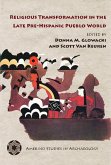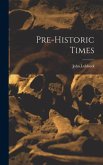From the Mesoamerican highlands to the Colca Valley in Peru, pre-Columbian civilizations were bastions of power that have largely been viewed through the lens of rulership, or occasionally through bottom-up perspectives of resistance. Rather than focusing on rulers or peasants, this book examines how intermediate elites--both men and women--helped to develop, sustain, and resist state policies and institutions. Employing new archaeological and ethnohistorical data, its contributors trace a 2,000-year trajectory of elite social evolution in the Zapotec, Wari, Aztec, Inka, and Maya civilizations. This is the first volume to consider how individuals subordinate to imperial rulers helped to shape specific forms of state and imperial organization. Taking a broader scope than previous studies, it is one of the few works to systematically address these issues in both Mesoamerica and the Central Andes. It considers how these individuals influenced the long-term development of the largest civilizations of the ancient Americas, opening a new window on the role of intermediate elites in the rise and fall of ancient states and empires worldwide. The authors demonstrate how such evidence as settlement patterns, architecture, decorative items, and burial patterns reflect the roles of intermediate elites in their respective societies, arguing that they were influential actors whose interests were highly significant in shaping the specific forms of state and imperial organization. Their emphasis on provincial elites particularly shifts examination of early states away from royal capitals and imperial courts, explaining how local elites and royal bureaucrats had significant impact on the development andorganization of premodern states. Together, these papers demonstrate that intricate networks of intermediate elites bound these ancient societies together--and that competition between individuals and groups contributed to their decline and eventual collapse. By addressing
Hinweis: Dieser Artikel kann nur an eine deutsche Lieferadresse ausgeliefert werden.
Hinweis: Dieser Artikel kann nur an eine deutsche Lieferadresse ausgeliefert werden.








